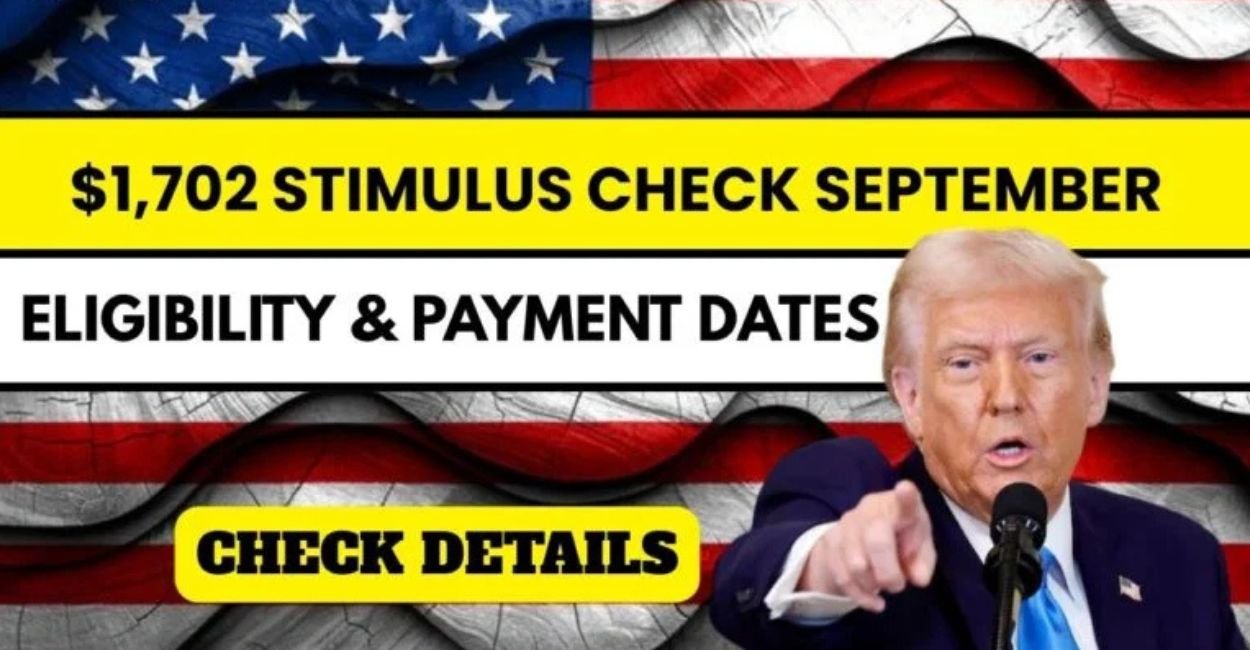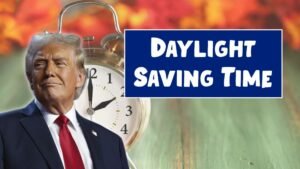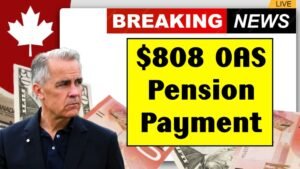Are you a senior on a fixed budget or a family pinching pennies amid climbing grocery and rent prices? The $1,702 stimulus payment rolling out in September 2025 could be the financial breather you’ve been waiting for. This one-time federal aid targets hardworking Americans hit by inflation – that’s the steady rise in everyday costs that makes dollars stretch less far.
Designed to cover essentials like meals, housing, and healthcare, it’s a quick cash injection to keep households steady. If you’re receiving Social Security or qualify as low-income, you might snag this without lifting a finger. In this clear, no-fuss guide, we’ll unpack what it means, who’s in line for it, the exact rollout timeline starting September 11, 2025, and easy ways to track yours. Optimized for real help, let’s explore how this support can lighten your load and spark some spending power.
What Are the $1,702 Stimulus Payments?
These payments are a government handout aimed at easing money worries for folks facing tough times. Unlike regular paychecks, they’re a bonus from Uncle Sam to help with bills when prices soar. The $1,702 amount – up slightly from past rounds to match higher living costs – goes straight to those who need it most, like retirees or working parents.
Think of it as economic fuel: when people get extra cash, they spend on local stores, which helps the whole country bounce back. This 2025 round builds on earlier stimulus efforts during hard years, focusing on vulnerable groups. No repayment required, and it’s not counted as taxable income in most cases. For many, it means peace of mind – enough to stock the fridge or pay a utility bill without stress.
Why These Payments Are Crucial in September 2025
Fall often brings back-to-school costs, holiday planning, and seasonal bills that add up fast. With inflation still nipping at heels – making everything from bread to bus fares cost more – this timely payout acts as a shield. It supports over 50 million potential recipients, prioritizing those on fixed incomes who can’t easily adjust.
By dropping funds mid-September, the government aims to boost spending before the holidays, lifting communities and curbing debt. For seniors, it’s a nod to years of contributions; for families, a hand with unexpected hits. In short, it’s smart policy that turns federal dollars into real-life relief.
Who Qualifies for the $1,702 Stimulus Payment?
Getting this isn’t a lottery – it’s based on clear, fair rules tied to your income and benefits. The IRS and Social Security Administration (SSA) use your latest records to decide, so keep things updated.
Core Eligibility Criteria
You likely qualify if you’re:
- A Social Security beneficiary, including those on retirement checks, Supplemental Security Income (SSI – extra help for very low earners who are elderly, blind, or disabled), or Social Security Disability Insurance (SSDI – payments for workers hurt on the job).
- A low- to middle-income earner making under $75,000 yearly if single (or $150,000 for couples), per your most recent tax return.
- A veteran pulling VA benefits or disability pay from military service.
- Part of a household with kids or dependents, which can unlock family add-ons.
No kids? No problem – singles and couples still count if income fits. U.S. citizens or legal residents only; file taxes to stay in the loop.
Income Thresholds at a Glance
Check this simple table to see if your earnings line up – these are 2025 guidelines:
| Filing Status | Max Income for Full $1,702 | Partial Payment Range | No Payment Above |
|---|---|---|---|
| Single Person | Under $75,000 | $75,001 – $90,000 | $90,000 |
| Married Filing Jointly | Under $150,000 | $150,001 – $180,000 | $180,000 |
| Head of Household | Under $112,500 | $112,501 – $135,000 | $135,000 |
For example, a retired couple earning $140,000 together gets the full amount, but at $160,000, it tapers off. Dependents add $500 each, so families score bigger.
September 2025 Payment Schedule: When to Expect Your Cash
The IRS rolls these out in waves to avoid chaos, starting sharp on September 11, 2025. Direct deposit folks get it fastest; mail takers wait longer.
In bullet points, the phased timeline:
- Wave 1 (September 11, 2025): Auto-payments for SSI and SSDI recipients with bank info on file – hits accounts same day.
- Wave 2 (September 18-25, 2025): Social Security retirees and low-income filers; direct deposits by mid-month, checks mailed later.
- Wave 3 (Early October 2025): Catch-up for paper filers or those without updated details – arrives 4-6 weeks post-processing.
- Special Note: Holidays or weekends shift dates forward; track via IRS tools.
Most see funds by month’s end, turning September into a mini-payday.
How to Check Status and Secure Your $1,702 Payment
No application needed for most – it pulls from your SSA or IRS file. But verifying keeps you ahead.
Step-by-Step Action Plan
- Update Records: Log into SSA.gov or IRS.gov to confirm bank routing (9-digit code) and account numbers – takes 5 minutes.
- File Recent Taxes: Submit your 2024 return early if not done; it triggers eligibility checks.
- Track Online: Use the IRS “Get My Payment” portal (live from September 1) – enter SSN, filing status, and refund amount for real-time updates.
- Claim if Missed: If nothing by October 15, file Form 1040-X for recovery; helpline at 1-800-829-1040 helps.
Pro tip: Enable email alerts for SSA notices to dodge surprises.
Maximizing Your Stimulus: Smart Spending and Stacking Tips
Once in hand, make it count. Pair with food banks or utility aid for extra stretch. Budget 60% for must-haves, 20% debt payoff, 20% emergency fund. Avoid scams – the IRS never calls demanding upfront fees.
This payment shines when combined with credits like EITC for working families.
Conclusion
The $1,702 stimulus payment in September 2025 is a vital lifeline for Social Security recipients, low-income earners, veterans, and families grappling with inflation’s toll on daily life. With eligibility hinging on incomes under $75,000 single and automatic rollout from September 11, it’s accessible relief via direct deposit or mail.
By updating your IRS details and tracking online, you’ll ensure this cash lands where it helps most – groceries, rent, or a well-deserved breather. This isn’t just money; it’s acknowledgment of your resilience in uncertain times. If you qualify, celebrate the boost and plan wisely. For updates, bookmark IRS.gov – brighter finances start with one click.
Frequently Asked Questions (FAQ)
1. When do the $1,702 stimulus payments start in September 2025?
They kick off on September 11, 2025, for SSI/SSDI folks, with waves through late September and into early October.
2. Do I need to apply for this stimulus if I’m on Social Security?
No, it’s automatic – just ensure your 2024 taxes are filed and bank info is current with the SSA.
3. What if my income is slightly over the limit – can I still get something?
Yes, partial payments apply up to $90,000 single; use the IRS estimator for your exact share.
4. How do I track my payment status online?
Head to the IRS “Get My Payment” tool, input your SSN and filing details – updates appear within 24 hours of processing.
5. Is the $1,702 payment taxable?
Generally no, as it’s a recovery rebate credit – it won’t bump your tax bill next year.




